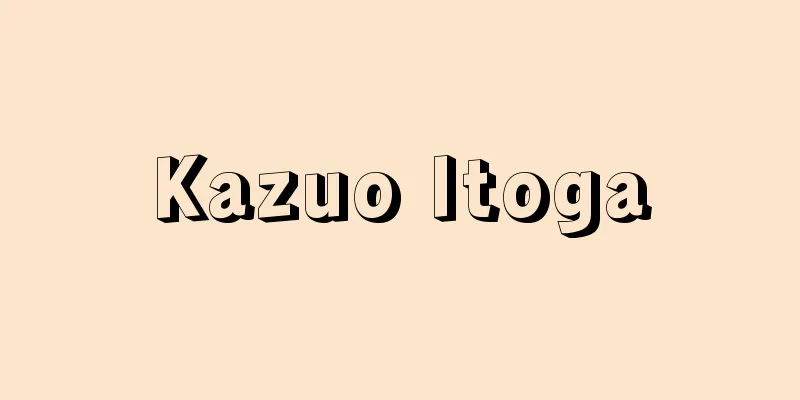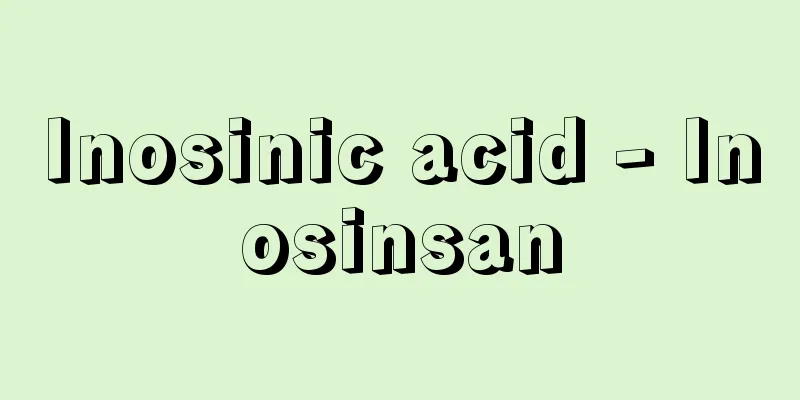Portugal - Portuguese Republic (English spelling)

|
A republic located in the southwest of continental Europe, at the western end of the Iberian Peninsula. Its official name is the Portuguese Republic, República Portuguesa. It faces the Atlantic Ocean and includes the Azores and Madeira islands. The total area of the mainland, Azores, and Madeira is 92,090 square kilometers, with a population of 10,356,117 (2001 census), 10,584,000 (2006 estimate). The population density is 115 people per square kilometer. The capital is Lisbon. The country's name comes from the Roman colony Portus Cale (present-day Porto), which was located near the mouth of the Douro River. The national flag features the national coat of arms on a green and red background. From the 12th to the 13th century, Portugal competed with Islamic forces, and in 1297 it established its current borders. In that sense, it is one of the oldest countries in Europe. Internationally, it is a member of the United Nations, OECD (Organization for Economic Cooperation and Development), NATO (North Atlantic Treaty Organization), IEA (International Energy Agency), and EU (European Union). It has traditionally had strong ties with the rest of the world, and has actively expanded overseas since the Age of Discovery. Historically, it has close ties with neighboring Spain, as well as the United Kingdom, Brazil, and southern African countries. It is one of the countries with low national incomes in Western Europe, and has a large number of immigrants overseas. [Yutaka Tanabe and Kyohei Shibata] NatureGeologyThe geological system is roughly an extension of Spain. The northern Minho region is made up of volcanic metamorphic rocks and intrusive rocks, and faults and hot springs can be seen. The mountain ranges that extend southwest from the eastern border north of the Tagus River (Spanish name: Tagus River) form the western edge of the Meseta, and are made up of quartz layers of granite and shale. The Alto Alentejo, which forms the western edge of the Meseta in the south, has a similar geology, but its elevation drops to 200 meters. Beira Litoral and the coast of Extremadura are made up of Triassic sandstone. The alluvial plains formed by the Tagus and Saado rivers form the lowlands in the southwest. [Yutaka Tanabe and Kyohei Shibata] terrainPortugal north of the Tagus River, which flows west through the center of the Iberian Peninsula, is mountainous with rugged terrain, while the south is made up of plains and low plateaus with gentler terrain. Many of the mountain ranges in the north are over 1,000 meters high, with the highest being the 1,991-meter peak of the Serra da Estrela. The main rivers are the Douro River (Spanish name: Duero River) and the Tagus River, both of which flow from Spain. In northern Portugal, the rivers flow from the northeast to the southwest, but in the south, due to the ruggedness of the Alto Alentejo to the Caldeirão mountain range, the rivers flow from the southeast to the northwest. [Yutaka Tanabe and Kyohei Shibata] climatePortugal's mainland is in the temperate zone, and the climate is generally mild. In the northern part of the country, low pressure systems from the North Atlantic dominate in winter, and when high pressure systems from the Meseta and Siberia are strong, temperatures drop. Snowfall occurs in the northeastern mountainous areas and the Serra da Estrela, but extremely cold weather is rare. The southwestern part of the country has a Mediterranean climate similar to that of the west coast oceanic region, with dry summers and precipitation in winter. The southern tip of the country can reach high temperatures due to the influence of Africa. The average annual temperature is 16°C, with a maximum average temperature of around 22°C, and the average minimum temperature is 6.2°C in Bragança, the coldest region. Annual precipitation is 1,000-2,000 mm in the Minho region and just under 700 mm in Lisbon. [Yutaka Tanabe and Kyohei Shibata] BiotaAbout two-thirds of Portugal's plant species are shared with other parts of Europe, the remainder being of Iberian and African origin. The flora is quite clearly divided north and south of the Tagus River. The northern mountainous region is dominated by pines and oaks, with chestnuts and elms also found. In the south cork oaks, holly, almonds and figs are prominent. Olives are widespread in the Douro River Valley from the centre to the north. Wild goats and deer live in the mountainous regions, but there are few unique species. Fish and shellfish are abundant, and there are also many migratory birds to be seen. Unlike Spain, the green trees and wildflowers that adorn the fields are beautiful. [Yutaka Tanabe and Kyohei Shibata] Geography
The Traz-os-Montes and Alto d'Oro regions are located at the western edge of the Meseta. The vegetation on the plateau is poor and the settlements are sparse. However, farming is carried out in the deep river valleys, and the cultivation of grapes, which are the raw material for Port wine, is thriving on terraced cultivated land, along with olives and figs. The famous rose wine brand "Mateus" is produced in the suburbs of Vila Real, the capital of Traz-os-Montes. Beira Litoral is a low-lying region with well-developed waterways and sandy soils with pine forests, while inland it is cultivated with wheat and corn, olive trees and grapes. The Beira Alta and Beira Baixa regions are an extension of the central Iberian mountain range, with sheep farming on the mountain grasslands. The population is concentrated along the Mondego and Zézere rivers. The Mondego valley produces sweet red wines. The region was the scene of the conflict between Portugal and Spain, and as such there are also walled settlements. The Extremadura region, centered around Lisbon, is known for its beautiful sandy beaches, especially around Nazaré. From Nazaré to Setubal, wheat and olives are cultivated between pine and eucalyptus forests, and the cultivation is more intensive and larger in scale than in the north. The area around Lisbon is the political, economic and cultural center of the region. Ribatejo means the banks of the Tagus River, and while on the right bank olives are mainly grown, along with grapes and vegetables, on the left bank there are large-scale wheat and olive farms. In the lower reaches of the Tagus river, rice cultivation and livestock farming are also popular. The landscapes of Alto Alentejo and Baixo Alentejo, which occupy most of southern Portugal, contrast with those of the north. This region is Portugal's granary, with vast wheat fields. The large land ownership system collapsed in the 1974 coup, and the movement for land liberation was the most intense, but collective farm management is being reviewed, and efforts are being made to irrigation and soil improvement. In the Saado River basin, rice cultivation in paddy fields is thriving, and eucalyptus can also be seen. The Algarve region, located at the southernmost tip of Portugal, is separated from the Alentejo region by low hills. Cultivation and processing of almonds, figs, and other fruits is popular, and horticulture such as geraniums, cotton, and carob is also practiced. The buildings are whitish in a Mediterranean style, in contrast to the dull colors of the north. It is also a region that has been strongly influenced by Arab culture. The coast is a tuna migration area, and there are many fishing ports, so fishing and canning industries are thriving, but the cool summers and warm winters make it a tourist resort area targeting foreigners. [Yutaka Tanabe and Kyohei Shibata] historyUntil the founding of the nationThe indigenous people of the area that is now Portugal, called Iberians, intermarried with the Celts who invaded the peninsula from the 7th century BC, and from the end of the 3rd century BC came under the overwhelming influence of ancient Roman civilization. Latin replaced the indigenous languages, Christianity spread, and roads were built from north to south, connecting the previously isolated regions. However, with the decline of the Roman Empire, Germanic peoples who came from the north established the Suebi Kingdom in Braga, but it was annexed by the Visigothic Kingdom in the mid-6th century AD. In 711, Muslims invaded from North Africa, and most of the peninsula was ruled for about eight centuries. The Reconquista, which began in the north of the peninsula, made great progress under Alfonso VI, King of Leon and Castile. In 1096, French knight Henry of Burgundy was given the County of Portocare between the Minho and Douro rivers by Alfonso VI, and his son Afonso Henriques (Afonso I, 1109?-1185, reigned 1139-1185) gained independence from Leon and Castile in 1143 and founded the Kingdom of Portugal with Coimbra as its capital. Successive kings continued the Reconquista, and by the mid-13th century the country had reached the Mediterranean Sea. Under King Dinis's reign (1279-1325), colonization of the country progressed and the troubadour culture flourished. [Kinshichi Norio] Age of ProsperityHowever, from the mid-14th century, Portugal suffered serious social and economic crises due to the plague and the war against Castile. In 1383, the country was divided into pro-Castilian and independent factions due to the issue of succession to the throne. In 1385, the victorious independent faction elected João I as king, and the Avis dynasty was established. Supported by the maritime bourgeoisie, the Avis dynasty adopted a policy of overseas expansion. João I's son, Prince Henry the Navigator, led an expedition to West Africa, and in 1498 Vasco da Gama succeeded in discovering a sea route to India. Asian spices were imported directly to Europe by sea, and Lisbon achieved unprecedented prosperity. The Portuguese established a base for Oriental domination in Goa, India, and expanded their trade area, and spread Christianity through the Jesuits. They were the first Europeans to visit Japan in 1543, bringing with them Nanban culture. However, its prosperity began to decline as early as the mid-16th century, and in 1580 it was annexed by Spain. [Kinshichi Norio] Subjugation to BritainAfter regaining independence from Spain in 1640, King João IV established the Braganza dynasty, but in order to maintain its independence from Spain, it deepened its dependency on England. Having lost its trade with India for spices, Portugal developed a sugar industry in Brazil in the 17th century, and gained great wealth in the 18th century from the large amounts of gold mined in Brazil, but most of that wealth flowed out of the country. The dictatorial Marquis of Pombal under José I (1714-1777, reigned 1750-1777) halted this decline and restored a considerable degree of prosperity towards the end of the 18th century, but the Napoleonic invasion in 1807 and the Peninsular War again plunged Portugal into crisis. The British, who had forced the royal family to flee to Brazil, were granted great privileges in the Brazilian market. The bourgeoisie of Portugal, which had lost its monopoly in Brazil, succeeded in a liberal revolution in 1820 and established a constitutional monarchy. In 1834, the commercial bourgeoisie won the battle against the absolutist forces and transformed into an agricultural bourgeoisie by purchasing church lands that had been confiscated as state property, while at the same time compromising with the old aristocracy, resulting in the survival of the feudal structure. Portugal was incorporated into the British free trade system by exporting agricultural products to Britain and importing industrial products from that country. [Kinshichi Norio] From the Republican Revolution to the Salazar DictatorshipAfter 1851, the political situation stabilized under a two-party system of the Reform Party and the Progressive Party, and modernization, known as "reform," was promoted. However, when exports to Britain stalled due to the economic downturn in the 1870s, Portugal sought new avenues in African colonies and attempted to expand its territory by linking Angola and Mozambique. This policy was strongly opposed by Britain, which was pursuing a policy of expanding across Africa, and Portugal was forced to accept an ultimatum from the British government, which led to the royalist government losing the trust of the people. Due to the financial crisis and political instability at the time, a republican revolution was successful in Lisbon in October 1910, and the king went into exile in Britain. This revolution was supported by the urban middle class, and republicans such as Afonso Costa (1871-1937) adopted anti-clerical policies such as the separation of church and state and the approval of divorce laws, but the Republican Party soon split, and the political instability that characterized the 16 years of the First Republic began. In December 1917, when Portugal entered World War I, right-wing military officer Sidonio Pais (1872-1918) seized power in a coup d'état, and using his charismatic popularity, he was elected president the following year in 1918. However, Pais was assassinated in Lisbon in December of the same year, and in the north, royalists declared themselves a monarchy, and political instability reached its peak. The post-war economic crisis and labor offensive combined to bring the First Republic to a complete standstill. In May 1926, a coup by right-wing military personnel was successful again, and General António Óscar de Fragoso Carmona (1869-1951) tried to restore order by implementing strong-arm dictatorship, and invited Oliveira Salazar, a professor at the University of Coimbra, to become Minister of Finance to overcome the serious financial crisis. Salazar eliminated the long-standing budget deficit in less than a year, and in 1932, supported by right-wing forces such as capitalists/landlords, the church, the military, and Catholic intellectuals, he became Prime Minister. The following year, in 1933, he established a unionist "New State" system, and after the Spanish Civil War in 1936, he began to lean toward fascism. Spain maintained neutrality during World War II, and even after the war, he maintained and strengthened his dictatorship through his clever foreign policy and strong-arm dictatorship. [Kinshichi Norio] Return to DemocracyHowever, the dictatorial regime began to waver with the wars of independence and liberation that began in African colonies in 1961. In 1968, Salazar retired and was replaced by Marcelo Caetano (1906-1980) as prime minister. However, on April 25, 1974, a young officer who had fought on the front lines of the colonial war staged a coup, and the dictatorial regime that had existed for nearly half a century collapsed. The left-wing military government recognized the independence of colonies such as Angola and Mozambique, nationalized key industries, and carried out land reform. With the success of the coup, Antonio Spinola became president in May of the same year, but resigned in September after clashing with left-wing radicals. He was succeeded by Francisco da Costa Gomes (1914-2001). After the transition to civilian rule in 1976, a new republican constitution was promulgated, and Portugal returned to a democratic system for the first time in half a century. [Kinshichi Norio] PoliticsPolitical systemThe country has a republican system. After a coup in 1974, a new constitution with socialist overtones was enacted in 1976. Since then, the government has been unstable, with 16 in the 12 years up to 1986. In the general election of October 1985, Aníbal Cavaco Silva (1939- ) of the Social Democratic Party (PSD) became prime minister, and the following year, former Prime Minister Mário Soares of the Socialist Party (PS) became the first civilian president (directly elected for a five-year term) in 60 years, and the political situation has calmed down since then. In 1996, Jorge Sampãio (1939-2021) of the PS became president, and at the same time, he appointed António Guterres (1949- ), Secretary General of the PS, as prime minister for the first time in 10 years. In 2001, Sampaio was re-elected president. In the general election of March 2002, a center-right coalition government was formed between the PSD and the Popular Party (PP), and José Manuel Duaro Barroso (1956- ) of the PSD became prime minister. In July 2004, Barroso was elected as the Commissioner of the European Commission and resigned as prime minister, and was succeeded by Pedro Santana Lopes (1956- ) of the PSD. In the general election of February 2005, the PS won with an outright majority, and José Socrates (1957- ) of the PS was appointed prime minister, but in the presidential election of February 2006, Aníbal Cavaco Silva (1939- ) was elected with the support of the PSD and PP. He became the first right-wing president since democratization. The Parliament of the Republic (four-year term, with a minimum of 180 and a maximum of 230 seats, currently 230) is a proportional representation system, with voting rights given to men and women over the age of 18. The PS, which promotes cooperation between public and private enterprises, and the PSD, which emphasizes the need for nationalization of key industries and financial intervention by the state, compete for power, but sometimes cooperate with each other. [Yutaka Tanabe and Kyohei Shibata] Local GovernmentPortugal's mainland has 18 administrative regions, headed by governors appointed by the government. The administrative regions are further divided into about 300 municipalities, whose residents elect municipal councils. The municipal councils then elect committees for administration. There are also trade and industry committees and councils at the municipal level. The Azores and Madeira, which are separate from the mainland, were granted a degree of autonomy in 1976, but remain within the Republic. [Yutaka Tanabe and Kyohei Shibata] DiplomacyImmediately after World War II, Salazar's dictatorship was seen as fascist by both the East and West, but with the onset of the Cold War, Portugal was welcomed into NATO in 1949, becoming a member of the West, and in 1955 joined the United Nations. Since the late 1960s, the wars of independence in Angola and Mozambique have intensified and become bogged down, and Portugal has become increasingly isolated internationally. After the coup in 1974, Portugal underwent hectic diplomacy, including the recognition of the independence of African colonies and rapprochement with the Communist bloc, but it has remained fundamentally a member of the West. In January 1986, Portugal officially joined the European Community (EC), and after the EC transitioned to the EU, it ratified the EU Treaty in December 1992. On the other hand, Portugal has been in conflict with Indonesia for many years over the issue of East Timor, a former colony that arose after the coup, and has held several talks since 1995. Portugal, along with Western European countries and the United Nations, condemned Indonesia's annexation of East Timor, but Indonesia recognized East Timor's separation in October 1999. In 1996, the Community of Portuguese Language Countries (CPLP), an international cooperation organization made up of countries where Portuguese is an official language, was established, and East Timor joined in 2002 after its independence. The CPLP's member countries are Portugal, Brazil, Angola, Mozambique, Guinea-Bissau, Sao Tome and Principe, Cape Verde, and East Timor (2009), making up eight countries. Its headquarters are in Lisbon. [Yutaka Tanabe and Kyohei Shibata] defenseIt has three branches: army, navy and air force, and is overseen by the Ministry of National Defense. Previously, all men over the age of 20 were required to serve two years in the military, which could be extended or substituted with other public service, but in November 2004, it moved to a fully volunteer military system. As a member of NATO, it is home to the Iberian Atlantic Command, and provides ammunition storage facilities and communications facilities. It also allows the United States Air Force to use Lages Military Airport on the strategic Atlantic island of Terceira in the Azores archipelago. In 2005, the army had 22,400 troops, the navy 14,104 and the air force 8,900. [Yutaka Tanabe and Kyohei Shibata] Economy and IndustryStructural featuresAfter the 1974 coup, the Portuguese economy rapidly deteriorated due to the loss of overseas territories, nationalization of companies, and hasty land release in the south. As a result of the bold austerity measures following emergency loans from the International Monetary Fund (IMF) (1977), economic indicators began to improve from around 1985. The inflation rate averaged 10% per year from the mid-1980s to the early 1990s, and as a result, the growth rate of GDP (gross domestic product) remained in the low single digits. In the 1990s, inflation subsided, reaching the 3% range in 1996. As of 2007, it is 1.7%. Accordingly, GDP growth is recovering. Although 10% of the working population is engaged in agriculture, it produces just under 5% of GDP, making it impossible for the country to be self-sufficient. Manufacturing accounts for about 30% of GDP, but the narrowness of the domestic market is a problem. A notable feature is that remittances from overseas immigrants play a major role in the balance of payments. [Yutaka Tanabe and Kyohei Shibata] resourceThe country's estimated reserves are 19 million tons of coal (anthracite), 37 million tons of lignite, 8,200 tons of uranium, and 32 million tons of copper ore. It is one of the world's leading producers of tungsten, with production of about 700 tons in 2001. The main production area is Panasqueira. Uranium has been developed since 1963, and the main production area is Urgueirisa, south of Viseu. With the aim of improving energy self-sufficiency, hydroelectric power is generated from rivers such as the Cavado, Doro, Zezere, and Tagus, and hydroelectric power accounts for 30% of the country's generating capacity. There are no nuclear power plants. The country is also focusing on solar power generation to reduce carbon dioxide emissions. [Yutaka Tanabe and Kyohei Shibata] Agriculture and ForestryIt is said to have the lowest productivity in Western Europe. In addition to lagging infrastructure development, the chaos that followed land liberation and collectivization in the south after the coup and the drought in the early 1990s are some of the causes. In the north, the average cultivated land area is only about 5.7 hectares, and many of the operations are small scale. The main crops are grains such as wheat and corn, potatoes, grapes, and olives. Livestock farming exports processed meat, but this does not account for a large proportion of the total. Forestry has been important since the second half of the 19th century, and cork is a particularly important product. [Yutaka Tanabe and Kyohei Shibata] FisheriesThe country is rich in seafood, which makes up a large proportion of its diet. Matosinhos, Setubal and the Algarve are the main landing points. The variety of fish is very large, but the main species are sardines (exported in cans) in the coastal fisheries and cod in the deep-sea fisheries (operated off the coasts of Newfoundland and Greenland). In 2001 the total catch was 191,214 tonnes. [Yutaka Tanabe and Kyohei Shibata] Mining and ManufacturingIn 1975, key industries such as cement, petrochemicals, shipbuilding, and power generation were nationalized. Tungsten and uranium are well known in the mining industry, but overall, mining does not account for a large share of the economy. Until the 1980s, the most important industrial sectors were food (canned fish, meat preservation, dairy products, flour milling), beverages (wine, beer), textiles, and shoe manufacturing. Although wages are low, the country is not very competitive internationally. Difficulties in procuring parts and political instability had discouraged foreign investment, but from the mid-1980s, foreign capital gradually increased, and automobile assembly and electronics industries developed. In 2002, of the total direct investment in Portugal of 1.878 billion euros, 1.5722 billion euros (about 84%) came from countries in the EU (European Union). Brazil and the United States followed. However, the figures fluctuate greatly from year to year. [Yutaka Tanabe and Kyohei Shibata] Import/ExportWith total imports of $45,033 million and exports of $31,314 million (2003), the country continues to run a chronic trade deficit. Its main trading partners are Spain, Germany, France and other EU countries. Export products include clothing, textiles and fiber products, electrical machinery products, automobiles and automobile parts, cork and cork products, food, and wine. Imports include crude oil, industrial products, grains, and fish and shellfish. The role played by foreign-affiliated companies in exports is increasing. [Yutaka Tanabe and Kyohei Shibata] FinanceSince 1974, the balance of payments has deteriorated rapidly, and it has been dealt with through remittances from overseas emigrants, tourism revenues, public loans from the IMF and other institutions, and currency devaluation. To curb inflation, fiscal austerity measures have been strongly promoted since 1983, and the situation finally calmed down around 1985. After joining the EC in 1986, foreign capital flowed in, and in 1990 capital inflows were somewhat restricted. Most financial institutions were nationalized after the coup, but the establishment of private banks was permitted in 1984, and as of 1998, 81 private banks had been established. [Yutaka Tanabe and Kyohei Shibata] Transportation and CommunicationsThe total length of roads is 72,600 km (2002), and the total length of railways is 3,579 km (1999). The prevalence of automobiles and mass media (radio, television, newspapers, etc.) is low compared to other Western European countries. The long-established maritime industry has a capacity of 1.1 million tons (2002), and the main ports are Lisbon, Leixão, Istru, and Setúbal. Air transport is provided by TAP Portugal, which connects the mainland with the Azores, Madeira, and overseas. [Yutaka Tanabe and Kyohei Shibata] Development and ConservationThe development of industrial infrastructure is an urgent task, but due to the political and economic turmoil that has prevailed until recent years, national land development has stalled. River development has been carried out in the north, such as on the Douro and Tagus rivers, but in the 1980s, plans were made to develop multipurpose dams for power generation and irrigation in the south, such as the Alentejo region. Portugal's national land development is closely linked to external relations, due to the large number of international rivers and the country's reliance on foreign sources of funding, such as agricultural development funding from the EU. [Yutaka Tanabe and Kyohei Shibata] Society and CultureresidentsLocated at the western edge of Europe and close to the African continent, Portugal has been invaded by various ethnic groups since ancient times. Phoenicians, Greeks, Celts, Romans, Germanic peoples, Visigoths, Jews, Moors, etc. arrived, but they mixed together and today Portugal is one of the most homogeneous ethnic nations in Europe. Racially, the people are of Mediterranean descent, medium height, brown eyes, and blackish or chestnut hair, but in the north, blue eyes and blond hair (of Germanic or Visigothic descent) can occasionally be seen. The official and common language is Portuguese. It is a Romance language that originated during the Roman rule. In 1931, an orthographic agreement was signed with Brazil, and there is little confusion on both sides of the Atlantic Ocean. As for religion, 97% of the population is Roman Catholic and 1% is Protestant, making the religious composition extremely homogeneous, just like the races. Generally, people are very religious, and there are many religious holidays. [Yutaka Tanabe and Kyohei Shibata] National LifeThe population was 10,356,117 in 2001, with growth rates of 0.7% per year from 1981 to 1991, 0.2% from 1996 to 2000, and 0.6% from 2000 to 2006. The population is concentrated in Lisbon and Porto, while the mountainous areas along the eastern border, especially the Alentejo, are less populated. The country's GDP per capita ($20,990 in 2007) is one of the lowest in Western Europe, and overseas emigration continues. In 1973, 130,000 people left the country, both legally and illegally, but this number has since decreased to around 20,000 per year. Most of the people left for France and other Western European countries, but in recent years the proportion of people emigrating to North America has increased. The total number of overseas emigrants is estimated at 5 million. Compulsory education is six years of primary school and three years of junior high school. After that, there are three years of high school and three years of university. There are 14 universities, including the University of Coimbra, which was founded in 1290. There are approximately 31,758 doctors in Portugal, or 1 for every 316 people (1999). This is a figure that is comparable to that of the Netherlands, France, and the UK, but in terms of the number of hospital beds (1 bed for every 238 people), it is the lowest in Western Europe. However, the social insurance system is widespread, and since 1979 the country has been working to make medical care free of charge. In addition to public and private hospitals, there are also charity hospitals for the poor. [Yutaka Tanabe and Kyohei Shibata] cultureThe origins of Portuguese culture date back to prehistoric times, but it was only from the Middle Ages onwards that the country began to develop its own unique culture, while still retaining traces of Roman and Islamic influences. After the introduction of the magnificent Gothic style, the decorative Manueline style flourished in the 15th and 16th centuries. Coupled with its expansion overseas, the Baroque style also showed its own unique development. For better or worse, it is a country with a traditional culture, characterized by a strong religious influence. There are many devout Catholics, and the temperament is said to be milder than that of neighboring Spain. Generally conservative, but on the other hand, they have a traditional overseas orientation and strong ties with relatives who emigrated. They like gorgeous decorativeness and religious atmospheres, and sympathize with memories, lyricism, and admiration. They have a preference for seafood, and cod dishes are famous. The drinks of choice are red wine and beer. There are many historical buildings (cathedrals and palaces) from the Gothic to Baroque periods, and efforts are being made to preserve them, partly because tourism is an important source of foreign currency. Lisbon has many museums and libraries, including the National Museum of Fine Arts, the National Coach Museum (the largest collection of ancient carriages in Europe), and the Museum of Contemporary Art. The historic University of Coimbra Library holds many valuable historical documents. [Yutaka Tanabe and Kyohei Shibata] artPortuguese literature blossomed in the 16th century, and gave birth to many poets, playwrights and historians, including Luis de Camonis. The subtle vowel changes in Portuguese encouraged the development of poetry in particular. The focus was on the flow of fate and historical materials rather than supernatural subjects, and playwork was also thriving. Social novels appeared in the 20th century, but cosmopolitanism was also advocated. The main theater companies counted 15, and they have become more prevalent in regional cities. There are four ballet companies and six orchestras. The folk song Fado is known in Japan along with the name Amalia Rodriguez. [Yutaka Tanabe and Kyohei Shibata] Speech and PublishingAfter the 1974 coup, the censorship system for newspapers was abolished, and the new constitution guaranteed freedom of speech. However, some newspapers became nationalized as a result of the nationalization of large private capital. They are mainly local newspapers, and as of 1999 there are 35 major daily newspapers, but both have less than 100,000 copies. Radio stations are also private stations, but television broadcasts are national (RTP, two channels) and private (two channels, one of which is religious television). [Yutaka Tanabe and Kyohei Shibata] Relations with JapanHistorical relationshipsIn his epic poem "Us Luziadas" (1572), which enjoyed Portuguese's great flight abroad, the national poet Louis de Camonis sings about Japan, "Gives high-quality silver and lights with the rules of God." Six years after 1543 (Anmon 12), when the Portuguese drifted over Tanegashima and introduced firearms, Francis Xavier began to prosecute Christianity in Kagoshima, and after this, many missionaries from the Jesuits (formed by Ignatius de Loyola and Xavier in opposition to Luther's new religions) visited Japan, but Louis Frois (comes to Japan 1563) was granted permission from Oda Nobunaga in 1569 (Eiroku 12).になったんです。 English: The first thing you can do is to find the best one to do.になったんです。 English: The first thing you can do is to find the best one to do. Date Masamune sent Hasekura Tsunenaga (returned to Japan in 1620) to the King of Spain and the Pope of Rome in 1613 in 1613 to trade with Novispania (Mexico) and to send missionaries, while Tokugawa Hidetada restricted trade in 1616 (Genwa 2) to Hirado and Nagasaki. Iemitsu banned the arrival of Spaniards and trade in 1634 (Kanei 11), and moved Portuguese to Dejima, Nagasaki, and after the Shimabara Rebellion, Portuguese ships were prohibited from coming to 1639. It was 70 years since Nagasaki opened, and 97 years after Tanegashima was washed ashore, resulting in a complete isolation of the country. However, the cultural and scientific heritage left behind by the Portuguese in Japan is multi-faceted. (1) Tactics, castle construction Nobunaga effectively utilized his guns to defeat the Takeda forces in the Battle of Nagashino, bringing a change in tactics, but castle architecture was the result of a fusion of castle construction techniques learned from the Portuguese and traditional architectural styles. (2) Urban planning, construction The Portuguese built the town of Nagasaki, and the sewerage from that time still remains. (3) Navigation, Astronomy, Shipbuilding Ikeda Yoshiun, who learned navigation from the captain of a Portuguese ship, wrote Genna Books (1618). Pedro Gomez (1535-1600), the deputy leader of Japan, wrote the first Western astronomy book (1594 Publishing). Mukai Gensho's Kenkon Ben Sestu (1650), which introduced the Earth-spherical theory to Japan, is an adaptation of the Portuguese Tensho, translated by Deputy District Chief Christovan Ferreira (after apologizing, Sawanochuan). (4) Medicine Luis de Almeida built a hospital in the prefecture (Oita) and performed surgical surgery. Sawano Chuan wrote the Secret Book of Nanban Surgery, and Yamamoto Gensen, who studied Portuguese surgery, wrote the surgical book Mangeshuyo (1619), and Franciscan missionaries also built a hospital for leprosy people. (5) Crafts, musical instruments, clothing, food and drink, daily necessities, smoking, etc. Nanban design lacquerware, unkempt karuta, watches, glasses, organs, club sun, chalmera, undergarments, velvet, rasha, meriyasu, kappa, cloak, wool fabric, buttons, wine, coffee, bread, castella, tempura, boro, battera (sushi. bateira is a boat, and is similar in shape), pomelo, marmalade, salad, cup, cantera, soap bubble, tin, swing, cigarettes, etc. (6) Printing Technique The Tensho boy envoy (1582-1590, Omura, Otomo, and Arima clans dispatched to the Pope and the Spanish and Portugal, also known as the Tensho envoy) took home the Western printing press and printed the "Christian Edition" doctrine books, literary books (such as "The Isoho Tales" and "The Heike Tales"), grammar books, and dictionary. (7) Music, Painting Instrumental music, painting, sculpture at the seminary (seminary school), and vocal music was taught in the church, and the boy envoy played the organ at the Ebola cathedral in Portugal and played Western music in front of Hideyoshi. Over 50 pairs of Nanban folding screens were painted due to the influence of religious paintings. (8) Languages The Nihon Daibunji and the Nippo Dictionary (published in Nagasaki from 1603 to 1604, with a total of about 30,000 words included) written and compiled by Joan Rodriguez are dictionary explanations of the first Japanese grammar and language written in Western European languages. Apparently, approximately 250 Portuguese has been converted to Japanese. (9) History, Philosophy, Ethics Lewis Frois's vast "Japanese History" was the first and largest Japanese history in Western European languages, and Joanne Rodriguez's "Japanese Church History" is also a study of outstanding Japanese customs and society. Christian philosophy and ethics taught monogamy. In modern times, Benceslau de Moraes' works written based on a deep understanding of Japan are also well-known in Portugal. [Abe Makoto] Modern relationshipsになったんです。 English: The first thing you can do is to find the best one to do. In terms of cultural exchange, Nitta Jiro's "Saudade" (1980), which is about the theme of the love between Moraes and Japanese women, and the Japanese-Portuguese co-production of "Floating Islands of Love" (1982). Considering that Portuguese's Western civilization and the introduction of science and technology in the 16th and 17th centuries became the source of today's economy and high-technology development, it can be said that it is extremely historically significant for Japan to renew its perception of Portugal and promote economic aid and cultural exchange. [Abe Makoto] になったんです。 English: The first thing you can do is to find the best one to do. "The World of Portugal: The Dreams of a Marine Empire" by Ichinose Atsushi (2000, Socio Hyoronsha)" ▽ "The New Edition of History of Worldwide 16: History of Spain and Portugal" (2000, Yamakawa Publishing)" ▽ "The Dictionary of Knowing Spain and Portugal" by Ikegami Satoshi, Ushijima Nobuaki, Kamiyoshi Keizo, Kin Shichio, Kobayashi Kazuhiro, and others" new revised and expanded edition (2001, Heibonsha)" ▽ "The History of Portugal" by David Birmingham, translated by Takada Yugen and Nishikawa Ayumi (2002, Sodosha)" ▽ "The History of Portugal" by Kin Shichio (2003, Sairyusha)" [Reference items] | | | | | | | | | | | | | | | | | | | | | | | | | | | | | | | Japanese | Daibunji | | | | | | | | | | | | | | | | [Complementary Materials] |"> Portugal flag ©Shogakukan Illustration/Shogakukan Creative "> Portugal location map Portugal's largest city and the capital of the country. It was a long-standing prosperous location for a trade route connecting the Mediterranean Sea with the North Sea. The photo shows the old town in the Baixa district, in the heart of the city. Lisbon, Portugal © Shogakukan "> Lisbon city Equestrian statue of King Jose I of Portugal. Located in the center of Piazza Comercio. Lisbon, Portugal ©Masashi Tanaka "> The statue of Jose I A tower built by King Manuel I to commemorate the discovery of the Indian route of Vasco da Gama. Located at the mouth of the Tajo River (Tahoe River), it serves as a watchtower and fortress for the Port of Lisbon. Part of the World Cultural Heritage Site "The Monastery of Geronimos and the Tower of Belem" (Portugal, registered in 1983, 2008) Lisbon, Portugal © Shogakukan "> Belem Tower The Monument to the Great Navigators in the Belem district of Lisbon. It stands at the mouth of the Tagus River in Lisbon, a place associated with the great voyages of discovery. Many navigators, including Prince Henry the Navigator, are engraved on it. Portugal, Lisbon ©Shogakukan "> Monument to the Discoveries The westernmost point of the European continent. A 144m high cliff extends towards the Atlantic Ocean. A poem by Camonis, standing near the lighthouse, says, "Here is the land and the sea begins." Portugal's west © Shogakukan "> Cape Roca Source: Shogakukan Encyclopedia Nipponica About Encyclopedia Nipponica Information | Legend |
|
ヨーロッパ大陸南西部、イベリア半島西端に位置する共和国。正式名称はポルトガル共和国República Portuguesa。大西洋に面し、アゾレス諸島およびマデイラ諸島を自国領に含む。本土とアゾレス、マデイラをあわせ面積9万2090平方キロメートル、人口1035万6117(2001センサス)、1058万4000(2006推計)。人口密度は1平方キロメートル当り115人。首都はリスボン。国名はローマ時代のドーロ川河口付近にあった植民地ポルトゥス・カレPortus Cale(現在のポルト市)に由来する。国旗は緑と赤の地に国家の紋章をあしらう。12世紀から13世紀にかけてイスラム勢力と角逐し、1297年ほぼ現在の国境を確定した。その意味でヨーロッパでもっとも古い国の一つである。国際的には国連、OECD(経済協力開発機構)、NATO(ナトー)(北大西洋条約機構)、IEA(国際エネルギー機関)、EU(ヨーロッパ連合)などのメンバーである。海外との結び付きが伝統的に強く、大航海時代以降積極的な海外進出を行った。歴史的には隣国スペインのほか、イギリス、ブラジル、南部アフリカ諸国と関連が深い。西ヨーロッパで国民所得が低い国の一つで、海外への移民が多い。 [田辺 裕・柴田匡平] 自然地質地質系統はほぼスペインの延長である。北部ミーニョ地方は火山性変成岩や貫入岩よりなり、断層や温泉がみられる。テージョ川(スペイン名タホ川)以北の東部国境から南西に延びる山塊はいずれもメセタの西縁部をなし、珪土(けいど)層で花崗(かこう)岩や頁(けつ)岩よりなる。南部メセタ西縁をなすアルト・アレンテージョもほぼ同様の地質だが、標高は200メートルまで下がる。ベイラ・リトラルおよびエストレマドゥーラの沿岸部は三畳紀系の砂岩よりなる。そしてテージョ川とサード川による沖積平野が南西部の低地を形成している。 [田辺 裕・柴田匡平] 地形イベリア半島中央部を西流するテージョ川以北のポルトガルは起伏の激しい山岳性だが、南部は平野と低い台地よりなっており、起伏は穏やかである。北部の山塊は1000メートル級のものが多く、最高はエストレーラ山脈の主峰エストレーラ山の1991メートル。主要河川はドーロ川(スペイン名ドゥエロ川)とテージョ川で、いずれもスペインから流れている。北部ポルトガルでは河川は北東から南西に向かうが、南部では、アルト・アレンテージョからカルデイラン山地にかけての起伏のために、河川は南東から北西に流れる。 [田辺 裕・柴田匡平] 気候ポルトガル本土は温帯に属し、気候は全般に穏やかである。北部の冬は北大西洋低気圧が卓越し、メセタやシベリアの高気圧が強いときには気温が下がる。北東の山岳部やエストレーラ山地には降雪もみられるが、強烈に冷え込むことはまれである。南西部は海洋性西岸型に近い地中海性気候で、夏は乾燥し冬に降水がある。南端部は、アフリカの影響で、高温に達することがある。年平均気温は16℃、最高平均気温22℃程度、最低平均気温も最寒のブラガンサで6.2℃である。年降水量はミーニョ地方で1000~2000ミリメートル、リスボンで700ミリメートル弱。 [田辺 裕・柴田匡平] 生物相ポルトガルの植物種の約3分の2はヨーロッパの他地域と共通し、残りがイベリアおよびアフリカ系である。テージョ川の南北で植物相はかなり明確に区分される。北部山岳地帯はマツやカシが多く、クリやニレもみられる。南部ではコルクガシ、モチノキ、アーモンド、イチジクが目だつ。オリーブは中部から北部にかけて、ドーロ河谷に広く分布する。山岳部には野生のヤギやシカが生息するが、独自の種はほとんどない。魚貝類が豊富なほか、渡り鳥も数多くみられる。スペインと異なり緑の樹木と野原を彩る野花が美しい。 [田辺 裕・柴田匡平] 地誌
トラズ・オス・モンテスおよびアルト・ドーロ地方はメセタ西端にあたり、高原上は植生が貧弱で集落もまばらである。しかし深くえぐれた河谷部では畑作が営まれ、棚状の耕作地でオリーブ、イチジクとともに、ポートワインの原料となるブドウの栽培が盛んである。トラズ・オス・モンテスの中心地ビラ・レアルの郊外では有名なロゼ・ワインの銘柄「マテウス」を産する。 ベイラ・リトラル地方は低地で水路が発達し、砂地には松林がみられる。内陸では小麦やトウモロコシが栽培され、オリーブやブドウが植えられている。 ベイラ・アルタとベイラ・バイシャ地方はイベリア中央部からの山塊延長部で、山岳部の草地では牧羊が営まれている。人口が集中するのはモンデーゴ川およびゼゼレ川の沿岸である。モンデーゴ河谷では甘味の強い赤ワインを産する。この地方はポルトガルとスペイン確執の舞台であったため、城壁に囲まれた集落もみられる。 リスボンを中心とするエストレマドゥーラ地方、とくにナザレ付近は美しい砂浜で知られる。ナザレからセトゥーバルにかけてはマツやユーカリの林に挟まれて麦やオリーブが栽培されており、北部に比べ集約性が高く規模も大きくなる。リスボン付近は政治、経済、文化の中心地である。 リバテージョはテージョ川沿岸を意味し、右岸ではオリーブを主にブドウと野菜の同時栽培が行われているのに対し、左岸には小麦とオリーブの大規模農場が連なる。テージョ川下流では稲作のほか牧畜も盛ん。 ポルトガル南部の大部分を占めるアルト・アレンテージョとバイショ・アレンテージョの景観は北部と対照をなす。この地方はポルトガルの穀倉で小麦畑が広がる。大土地所有制が1974年のクーデターで崩れ、農地解放の動きがもっとも激しかったが、集団農場経営は見直しが進められており、灌漑(かんがい)や土壌改良に力が注がれている。サード川流域は水田におけるイネの栽培が盛んでユーカリもみられる。 ポルトガルの最南端に位置するアルガルベ地方はアレンテージョ地方とは低い丘陵地で隔てられ、アーモンド、イチジクなどの栽培加工が盛んであり、ゼラニウム等の花卉(かき)、綿花、イナゴマメなどの園芸農業も行われている。建物は地中海風に白っぽくなり、北部のくすんだ色調と対照的である。アラブの影響を強く受けた地方でもある。沿岸はマグロの回遊海域で漁港が多く、漁業と缶詰工業が盛んであるが、夏涼しく冬暖かいので、外国人を対象とする観光リゾート地帯となっている。 [田辺 裕・柴田匡平] 歴史建国まで現在のポルトガル領に相当する地域の先住民はイベロとよばれるが、彼らは紀元前7世紀から半島に侵入してきたケルト人と混血し、前3世紀末からは古代ローマ文明の圧倒的な影響を受ける。先住民の言語にかわってラテン語が話され、キリスト教が広まり、南北を貫いて建設された道路はそれまで孤立していた各地域を結び付けた。しかし、ローマ帝国の衰退とともに北方から入ってきたゲルマン人はブラガにスエビ王国を築いたが、紀元後6世紀中葉西ゴート王国に併合された。 711年北アフリカから侵入してきたイスラム教徒によって半島の大半は約8世紀間支配されることになる。まもなく半島北部から始まったレコンキスタはレオン・カスティーリャ王アルフォンソ6世の下に大きく進展した。1096年フランスの騎士アンリ・ド・ブルゴーニュは、アルフォンソ6世からミーニョ川とドーロ川間のポルトカレ伯領を譲渡され、その子アフォンソ・エンリケス(アフォンソ1世Afonso Ⅰ、1109?―1185、在位1139~1185)は、1143年レオン・カスティーリャから独立しコインブラを都にポルトガル王国を建国した。その後も歴代の国王はレコンキスタを続け、13世紀中葉には地中海に到達する。ディニス王の治世(1279~1325)下には国内の植民活動が進み、トルーバドゥール文化が花開いた。 [金七紀男] 繁栄の時代しかし、14世紀中葉からペスト、対カスティーリャ戦争によりポルトガルは深刻な社会的・経済的危機にみまわれ、1383年には王位継承問題に端を発して国内は親カスティーリャ派と独立派に二分され、1385年勝利を収めた独立派はジョアン1世を国王に選定し、アビス王朝が開かれた。海商ブルジョアジーに支援されたアビス王朝は海外進出政策をとる。ジョアン1世の子エンリケ航海王子は西アフリカ探検を指揮し、1498年バスコ・ダ・ガマはインド航路発見に成功した。アジアの香料は海路直接ヨーロッパに輸入され、リスボンは未曽有(みぞう)の繁栄を遂げた。ポルトガル人はインドのゴアに東洋支配の拠点を築いて通商圏を拡大し、イエズス会を通じてキリスト教を布教した。彼らは1543年ヨーロッパ人として初めて日本を訪れ、南蛮文化をもたらした。しかしながら、その繁栄は早くも16世紀中葉には陰りがみえ始め、1580年にはスペインに併合される。 [金七紀男] イギリスへの従属1640年スペインからの再独立を成し遂げたジョアン4世はブラガンサ王朝を開いたが、スペインからの独立を守るためにイギリスへの従属を深めていく。インド香料交易を失ったポルトガルは、17世紀にブラジルに砂糖産業を発展させ、18世紀にはブラジルで大量に採掘された金によって大きな富を得たが、その富の大半は国外に流出した。 ジョゼ1世José Ⅰ(1714―1777、在位1750~1777)の下で独裁的政治を行ったポンバル侯はこの衰退に歯止めをかけ、18世紀末葉にはかなりの繁栄を回復できたが、1807年ナポレオン軍の侵略と半島戦争でポルトガルはふたたび危機に陥った。王室をブラジルに逃避させたイギリスはそのブラジル市場に大きな特権を付与された。ブラジルという独占市場を失った本国のブルジョアジーは、1820年自由主義革命に成功し、立憲王政を確立する。1834年絶対主義勢力との戦いに勝利を収めた商業ブルジョアジーは、国有財産として没収された教会領を購入することによって農業ブルジョアジーに転化するとともに旧貴族との妥協を図ったために封建的構造は存続する結果となった。ポルトガルは、農産物をイギリスに輸出し同国の工業製品を輸入することによってイギリス自由貿易主義体制に組み込まれる。 [金七紀男] 共和革命からサラザール独裁へ1851年以降、刷新党と進歩党による二大政党政治の下で政情は安定し、「刷新」という名の近代化が進められた。しかし、1870年代の不況で対英輸出が行き詰まると、新たに活路をアフリカ植民地に求めてアンゴラとモザンビークを結ぶ領土の拡大を図った。この政策は、アフリカ縦断政策を進めるイギリスの強硬な反対にあい、ポルトガルは英政府の最後通牒(つうちょう)の受諾を余儀なくされたため、王党政府は国民の信頼を失い、おりからの財政危機、政情不安から1910年10月リスボンで共和革命が成功し、国王はイギリスに亡命した。 この革命は都市の中産階層に支持され、アフォンソ・コスタ(1871―1937)らの共和主義者は政教分離、離婚法の承認など反教権主義的な政策をとったが、まもなく共和党は分裂し、第一共和政16年間を特徴づける政情不安が始まった。第一次世界大戦に参戦した1917年12月、右派軍人のシドニオ・パイス(1872―1918)はクーデターにより政権を奪取し、そのカリスマ的人気を利用して翌1918年には大統領に選出された。しかし、パイスは同年12月リスボンで暗殺され、北部では王党派が王政を宣言するなど政情不安はその極に達し、戦後の経済危機、労働攻勢が重なって第一共和政は完全に行き詰まっていた。 1926年5月、右派軍人によるクーデターが再度成功し、将軍カルモナAntónio Óscar de Fragoso Carmona(1869―1951)は強権政治を行って秩序の回復を図るとともに、深刻な財政危機克服のためにコインブラ大学教授オリベイラ・サラザールを蔵相に招聘(しょうへい)した。サラザールは1年足らずで積年の財政赤字を解消し、1932年には資本家=地主、教会、軍部、カトリック知識人などの右翼勢力に支持されて首相に就任した。翌1933年、組合主義的「新国家」体制を樹立し、1936年のスペイン内戦以降ファシズムに傾斜していく。第二次世界大戦では中立を守り、大戦後もその巧妙な外交政策と強権政治により独裁体制を維持、強化した。 [金七紀男] 民主体制への復帰しかしながら、その独裁体制は、1961年からアフリカ植民地に始まった独立解放戦争によって揺らぎ始める。1968年サラザールは引退し、かわってマルセロ・カエタノMarcelo Caetano(1906―1980)が首相に就任するが、1974年4月25日、植民地戦争の最前線で戦ってきた若手将校がクーデターを起こし、半世紀近い独裁体制は崩壊した。左翼軍事政権はアンゴラ、モザンビークなどの植民地の独立を承認し、基幹産業の国有化、農地改革を断行した。クーデターの成功により、同年5月アントニオ・スピノラが大統領に就任したが、左翼急進主義と衝突して9月に辞任。後任にコスタ・ゴメスFrancisco da Costa Gomes(1914―2001)が就任した。1976年の民政移管後、新たに共和国憲法が公布され、ポルトガルは半世紀ぶりに民主体制に復帰した。 [金七紀男] 政治政治制度共和制をとる。1974年のクーデターを経て1976年に社会主義的な色彩をもつ新憲法が制定された。以来政権は1986年までの12年間で16を数え、不安定であった。1985年10月の総選挙で社会民主党(PSD)のアニバル・カバコ・シルバAníbal Cavaco Silva(1939― )が首相になり、翌年、社会党(PS)のマリオ・ソアレス前首相が60年ぶりに文民の大統領(5年任期で直接選挙)となって以来、政治情勢は沈静化していった。1996年には、PSのジョルジェ・サンパイオJorge Sampãio(1939―2021)が大統領となり、同時に10年ぶりにPS書記長のアントニオ・グテレスAntónio Guterres(1949― )を首相に指名した。2001年サンパイオは大統領に再選。2002年3月の総選挙では、PSDと民衆党(PP)の中道右派連立政権が成立し、PSDの党首ジョゼ・マヌエル・ドゥラン・バローゾJosé Manuel Duaro Barroso(1956― )が首相に就任。2004年7月バローゾがEU委員長に選任され首相を辞任したため、後任にはPSDのペドロ・サンタナ・ロペスPedro Santana Lopes(1956― )が就任した。その後、2005年2月の総選挙ではPSが単独過半数を獲得して勝利し、PSの党首ジョゼ・ソクラテスJose Socrates(1957― )が首相に指名されたが、2006年2月の大統領選挙では、PSDとPPの支持を得たカバコ・シルバAníbal Cavaco Silva(1939― )が当選。民主化後、初の右派系出身の大統領が誕生した。 共和国議会(任期4年、定数は180以上、230以下と規定され、現在は230)は比例代表制で、選挙権は18歳以上の男女に与えられる。公共企業と民間企業の協調を進めるPSと、基幹産業の国有化と国家の財政的介入の必要を強調するPSDは、互いに政権を争いつつ、ときには協力しあっている。 [田辺 裕・柴田匡平] 地方行政ポルトガル本土には18の行政区があり、政府の任命する知事が首長となる。行政区はさらに約300の市町村に分かれ、住民が市町村議会議員を選出する。そして市町村議会は行政を担当する委員会を選出する。ほかに市町村レベルで商工委員会や審議会が設けられる。本土と離れたアゾレスおよびマデイラには1976年、ある程度の自治権が認められたが、共和国内にとどまっている。 [田辺 裕・柴田匡平] 外交サラザールの独裁政権は、第二次世界大戦直後、東西両陣営からファシスト的と目されたものの、冷戦に伴い1949年にNATO(ナトー)に迎えられて西側の一員となり、1955年には国連に加盟した。1960年代後半からアンゴラやモザンビークで独立戦争が激化・泥沼化してポルトガルは国際的な孤立を深めた。1974年のクーデター後、アフリカ植民地の独立容認、共産圏への接近など慌ただしい外交が展開されたが、基本的には西側陣営に属し続けてきた。1986年1月にはEC(ヨーロッパ共同体)に正式加盟、ECがEUに移行後、1992年12月にはEU条約を批准した。その一方、クーデター後にもちあがったかつての植民地東チモール問題ではインドネシアと長年対立状態にあり、1995年以降は何度か協議をもった。ポルトガルは西ヨーロッパ諸国や国連とともにインドネシアによる東チモール併合を非難していたが、1999年10月インドネシアは東チモールの分離を認めた。なお、1996年ポルトガル語を公用語とする国による国際協力組織、ポルトガル語諸国共同体(CPLP)が設立され、東チモールは独立後の2002年に加盟した。CPLPの加盟国はポルトガル、ブラジル、アンゴラ、モザンビーク、ギニア・ビサウ、サントメ・プリンシペ、カーボベルデ、東チモールの8か国(2009)。本部はリスボンに置かれている。 [田辺 裕・柴田匡平] 防衛陸海空の三軍を有し、国防省が統轄する。以前は20歳以上の男子は2年間の兵役を義務づけられており、延長もしくは他の公務をもって代替も可能であったが、2004年11月からは完全志願兵制に移行した。NATOの一員としてイベリア大西洋司令部が駐するほか、弾薬貯蔵施設や通信施設を提供している。また大西洋の要衝アゾレス諸島中のテルセイラ島にあるラージェス軍事空港をアメリカ合衆国空軍に使用させている。2005年の兵力は陸軍2万2400、海軍1万4104、空軍8900。 [田辺 裕・柴田匡平] 経済・産業構造的特徴1974年のクーデター以降、海外領の喪失、企業国有化、南部での性急な農地解放などの影響でポルトガル経済は急激に悪化した。IMF(国際通貨基金)の緊急融資(1977)に続く思いきった緊縮政策の結果、1985年ごろからは経済指標が上向いた。インフレ率は1980年代なかばから1990年代初頭にかけ、年10%台の平均値であり、そのためGDP(国内総生産)の伸び率は一桁(けた)台前半にとどまった。1990年代に入りインフレは鎮静化し、1996年には3%台となった。2007年現在、1.7%である。これに伴いGDPの伸びも回復しつつある。労働力人口の1割が農業従事者だが、GDPの5%弱を生産するにすぎず、自給できない状態である。製造業はGDPの約30%を占めるが、国内市場が狭隘(きょうあい)な点が問題である。海外移民からの送金が国際収支に大きな役割を果たすのが特徴である。 [田辺 裕・柴田匡平] 資源推定埋蔵量は石炭(無煙炭)1900万トン、褐炭3700万トン、ウラニウム8200トン、銅鉱3200万トン。世界有数のタングステン産出国で、2001年の生産量は約700トン。主産地はパナスケイラ。ウランは1963年から開発され、主産地はビゼウ南方のウルゲイリサ。エネルギー自給の向上を目ざし、カバド、ドーロ、ゼゼレ、テージョなどの河川で水力発電が行われており、発電能力の3割を水力が占める。原子力発電所はない。また、二酸化炭素の排出量を削減するために太陽光発電に力を入れている。 [田辺 裕・柴田匡平] 農林業西ヨーロッパでもっとも生産性が低いといわれる。基盤整備の立ち遅れに加え、クーデター後の南部での農地解放・集団化に伴う混乱や1990年代初めの干魃(かんばつ)が原因である。北部では平均耕地面積が5.7ヘクタール程度しかなく、零細な経営が多い。主要作物は小麦、トウモロコシ等の穀類やジャガイモ、ブドウ、オリーブなど。牧畜は加工肉を輸出するが、比重はあまり高くない。林業は19世紀後半から重視され、コルクがとくに重要な産品。 [田辺 裕・柴田匡平] 水産業海産物に恵まれ、食生活の大きな比重を占める。マトジニョス、セトゥーバルのほか、アルガルベ地方も主要な水揚げ地である。種類は甚だ豊富だが、沿岸漁業ではイワシ(缶詰にして輸出される)、遠洋漁業(ニューファンドランドおよびグリーンランド近海で操業)ではタラが主である。2001年の漁獲高19万1214トン。 [田辺 裕・柴田匡平] 鉱工業1975年にセメント、石油化学、造船、発電などの基幹産業が国営化された。鉱業ではタングステンやウランが有名だが、全体的にみて鉱業の占める比率は大きくはない。1980年代まで工業部門で重要なのは食品(魚類缶詰、肉の保存加工、酪農品、製粉)および飲料工業(ワイン、ビール)、繊維工業、靴製造などであった。賃金水準が低いとはいえ、国際競争力はあまり強くない。部品調達に難があることや政治情勢の不安などで海外からの投資は控えられてきたが、1980年代中ごろから外国資本の進出が漸増し、自動車組立てや電子工業の集積が進んだ。2002年の数値でみると、ポルトガルへの直接投資総額18億7800万ユーロのうち、15億7220万ユーロ(約84%)がEU(ヨーロッパ連合)内の国々からのもの。ついでブラジル、アメリカの順となっている。ただし毎年その数値は大きく変動している。 [田辺 裕・柴田匡平] 輸出入輸入総額450億3300万ドル、輸出313億1400万ドル(2003)で、恒常的貿易赤字傾向が続いている。主要貿易相手国はスペイン、ドイツ、フランスらEU諸国。輸出産品は衣類、織物および繊維製品、電気機械製品、自動車および自動車部品、コルク・コルク製品、食料、ワインなど。原油、工業製品、穀類、魚貝類を輸入している。外資系企業が輸出に果たす役割が増大しつつある。 [田辺 裕・柴田匡平] 金融・財政1974年以降国際収支がとみに悪化し、海外移民の本国送金、観光収入、IMFなどの公的融資、通貨切下げなどによって対処してきた。インフレーション抑制のため、緊縮財政が1983年以降強力に推進され、1985年ごろからようやく鎮静した。1986年のEC加盟後、外資が流入したため1990年には資本流入がやや制限された。大部分の金融機関はクーデター後国有化されたが、民間銀行の設立が1984年に許可され、1998年現在81行の民間銀行が設立されている。 [田辺 裕・柴田匡平] 交通・通信道路総延長7万2600キロメートル(2002)、鉄道総延長3579キロメートル(1999)。自動車の普及状態や、マス・メディア(ラジオ、テレビ、新聞など)の普及は他の西ヨーロッパ諸国に比較すると低い。長い歴史をもつ海運は110万トン(2002)を保有し、主要港湾はリスボン、レイションイストルー、セトゥーバルなど。航空運輸はTAP(タップ)ポルトガル航空が担い、本土とアゾレス、マデイラおよび海外を結んでいる。 [田辺 裕・柴田匡平] 開発と保全産業基盤整備が急務だが、近年までの政治・経済の混乱のため国土開発は停頓(ていとん)した。河川開発はドーロ川やテージョ川など北部で進められてきたが、1980年代に入ってアレンテージョ地方など南部における発電・灌漑(かんがい)用多目的ダム開発の計画が進められた。国際河川が多いこと、EUからの農業開発資金援助など資金調達面の海外依存など、ポルトガルの国土開発は対外関係と密接に結ばれている。 [田辺 裕・柴田匡平] 社会・文化住民ヨーロッパ西端に位置し、アフリカ大陸とも近いポルトガルは、古来さまざまな民族の侵入を被った。フェニキア人、ギリシア人、ケルト人、ローマ人、ゲルマン人、西ゴート人、ユダヤ人、ムーア人などが到来したが、それらは混合され、今日のポルトガルはヨーロッパでももっとも均質な民族国家の一つとなっている。人種的には地中海系で中背、茶色の瞳(ひとみ)で黒みがかった髪や栗(くり)色の髪が多いが、北部ではときたま青い瞳、金髪(ゲルマン人、西ゴート人の血統)がみられる。 言語は、公用語、通用語ともにポルトガル語。ロマンス語系で、ローマ支配期に起源を有する。1931年にブラジルと正字協定を結び、大西洋を挟んでことばの混乱の少ない言語となっている。 宗教は、ローマ・カトリック信者97%、プロテスタント1%であって、人種と同様にきわめて均質な宗教構成である。一般に信仰心が厚く、宗教祭日も多い。 [田辺 裕・柴田匡平] 国民生活人口は2001年1035万6117人、増加率は1981~1991年で年率0.7%、1996~2000年で0.2%、2000~2006年で0.6%。リスボンおよびポルトに人口が集中し、東部国境沿いの山岳地帯、とくにアレンテージョ地方は人口が少ない。1人当り国内総生産(2万0990ドル、2007)は西ヨーロッパでもっとも低い部類に属し、海外への移民が続いている。1973年には合法・非合法あわせて13万人が流出したが、その後は年2万人台に減少した。流出先はフランスをはじめとする西ヨーロッパ諸国であったが、近年北アメリカへの移民の割合が増大してきた。海外移民は総数500万人に上るとみられる。 義務教育は小学校6年と中学校3年である。その後は高等学校が3年、大学が3年課程である。大学は1290年創立のコインブラ大学をはじめ、14校ある。 ポルトガルの医師は約3万1758人で、人口316人当り1人である(1999)。これはオランダやフランス、イギリスなどに比して遜色(そんしょく)ない数字ではあるが、病床数でみると(238人当り1床)西ヨーロッパの最低水準になる。ただし社会保険制度は広く普及しており、1979年以後は医療無料化を目ざし始めた。公営と民間病院のほか、貧困者のための慈善病院も活動している。 [田辺 裕・柴田匡平] 文化ポルトガル文化の淵源(えんげん)は先史時代にさかのぼるが、ローマやイスラムの痕跡(こんせき)を残しつつ独自の文化を形成し始めたのは中世以降である。壮麗なゴシック様式が導入されたのち、15~16世紀にかけて装飾的なマヌエラン様式が開花した。海外進出と相まって、バロック様式も独自の発達をみせている。よくも悪くも伝統的な文化の国であって、宗教色の強いことが特徴である。 敬虔(けいけん)なカトリック信者が多く、気質は隣国スペインと比べ穏やかといわれる。概して保守的だが、他面伝統的な海外志向をもち、移住した親族との紐帯(ちゅうたい)も強い。華麗な装飾性と宗教的雰囲気を好み、追憶と叙情、詠嘆に共感する。海の幸を嗜好(しこう)し、タラ料理は有名。飲料は赤ワインとビール。 ゴシックからバロックにかけての歴史的建造物(聖堂、宮殿)が数多くみられ、観光が重要な外貨獲得手段であることも手伝って保存に力が入れられている。博物館や図書館はリスボンに多く、国立美術館、国立馬車博物館(古代の車両収集ではヨーロッパ随一)、現代美術博物館などがある。歴史を誇るコインブラ大学図書館は貴重な史料を多く収蔵している。 [田辺 裕・柴田匡平] 芸術ポルトガル文学は16世紀に開花し、ルイス・デ・カモンイスをはじめとする多くの詩人、劇作家や史家を生んだ。ポルトガル語の微妙な母音変化はとくに詩の発達を促した。超自然的な題材よりも運命の流転や歴史的な素材が興味の中心で、劇作も盛んであった。20世紀に至り社会派的な小説が登場する一方、コスモポリタニズムも標榜(ひょうぼう)された。主要劇団は15を数え、地方都市にも浸透している。バレエ団は4、オーケストラは6に上る。民間俗謡ファドはアマリア・ロドリゲスの名とともに日本でも知る人が多い。 [田辺 裕・柴田匡平] 言論・出版1974年のクーデター後、新聞の検閲制度が撤廃され、新憲法下で言論の自由が保障された。ただし民間の大資本が国有化されたことにより国営となった新聞もある。地方紙が主体で、1999年現在の主要日刊紙は35に上るが、発行部数はいずれも10万に満たない。ラジオには国営とともに民間局もあるが、テレビ放送は国営(RTP、2チャンネル)と民営(2チャンネルで、うち1局は宗教テレビ)がある。 [田辺 裕・柴田匡平] 日本との関係歴史的関係ポルトガルの海外雄飛を謳歌(おうか)した叙事詩『ウス・ルジーアダス』(1572)のなかで国民詩人ルイス・デ・カモンイスは日本について「良質の銀を産し神の掟(おきて)で光をえる」と歌っている。ポルトガル人が種子島(たねがしま)に漂着し、鉄砲を伝えた1543年(天文12)から6年後フランシスコ・ザビエルが鹿児島でキリスト教の布教を始め、これ以後イエズス会(ルターの新教に対抗しイグナティウス・デ・ロヨラとザビエルなどが結成)の多くの宣教師が来日したが、ルイス・フロイス(1563来日)は1569年(永禄12)織田信長から改めて布教を許可された。九州の大名大村純忠(おおむらすみただ)、大友宗麟(おおともそうりん)、有馬晴信(ありまはるのぶ)はポルトガル商人との貿易を求めて布教を許可し、ポルトガル船は1550年(天文19)以降、平戸、府内(大分)、横瀬浦、福田などに入港し、中国産生糸と日本の銀を主品目とする中継貿易を行った。大村純忠は、ポルトガル船のパイロットが良港であることを発見した長崎を1570年(元亀1)開港し、1580年(天正8)イエズス会に寄進したので長崎は教会領となった。豊臣秀吉(とよとみひでよし)は神道(しんとう)と仏教の国日本の法に違反するとして1587年キリスト教禁令を出し、翌1588年年長崎を直轄領としたが、貿易は奨励した。徳川家康も貿易振興政策をとり、1600年(慶長5)豊後(ぶんご)に漂着したオランダ船リーフデ号の航海長イギリス人ウィリアム・アダムズを、日本・ポルトガル貿易の仲介者であったジョアン・ロドリゲス神父にかえて貿易顧問にした。このころフランシスコ会、ドミニコ会などの宣教師も渡来して布教し、信徒は全国に広がったが、オランダとイギリスがポルトガル、スペインの布教は日本侵略の手段であると中傷し、国内でも仏教徒、儒者、神官などのキリスト教排斥の声が高まった。家康はキリスト教は封建社会の確立を妨げると考え、1612年から禁教令を出し、宣教師の追放と信者の改宗などを命じた。これからのちポルトガル・スペイン(1580~1640年スペイン王がポルトガル王を兼任)との貿易関係もしだいに悪化した。伊達政宗(だてまさむね)は1613年スペイン国王とローマ法王に、ノビスパニア(メキシコ)との貿易と宣教師派遣を求めて支倉常長(はせくらつねなが)を派遣(1620年帰国)しているが、一方で徳川秀忠(とくがわひでただ)は1616年(元和2)貿易を平戸、長崎に制限した。家光(いえみつ)は1634年(寛永11)スペイン人の来航と貿易を禁じ、ポルトガル人を長崎の出島に移し、島原の乱ののち1639年ポルトガル船の来航を禁止した。長崎開港後70年目、種子島漂着後97年目で全面的な鎖国が成立した。 しかし、ポルトガル人が日本に残した文化と科学の遺産は多方面にわたっている。 (1)戦術、築城 信長が鉄砲を有効に利用し長篠(ながしの)の戦いで武田勢を破り、戦術の変化をもたらしたが、城郭建築はポルトガル人から学んだ築城術と伝統的建築様式の融合の結果であった。 (2)都市計画、建設 ポルトガル人は長崎の町を建設し、そのころの下水溝がいまも残っている。 (3)航海術、天文学、造船術 ポルトガル船の船長から航海術を学んだ池田好運(いけだこううん)は『元和(げんな)航海書』(1618)を著した。日本副布教長ペドロ・ゴメスPedro Gomez(1535―1600)は日本で最初の西洋天文学の書物を書いている(1594出版)。日本に地球球形説を紹介した向井元升(むかいげんしょう)の『乾坤弁説(けんこんべんせつ)』(1650)は副管区長クリストバン・フェレイラ(棄教後、沢野忠庵(さわのちゅうあん))が翻訳したポルトガル天文書の翻案である。 (4)医学 ルイス・デ・アルメイダは府内(大分)に病院を建て外科手術を行った。沢野忠庵は『南蛮外科秘伝書』を著し、ポルトガル外科を学んだ山本玄仙(やまもとげんせん)は外科医学書『万外集要(まんげしゅうよう)』(1619)を書き、またフランシスコ会宣教師はハンセン病者の病院を建てた。 (5)工芸品、楽器、衣料、飲食物、生活用品、喫煙等 南蛮デザインの漆器、うんすんかるた、時計、眼鏡(めがね)、オルガン、クラブサン、チャルメラ、襦袢(じゅばん)、ビロード、羅紗(らしゃ)、メリヤス、合羽(かっぱ)、マント、毛織物、ボタン、ぶどう酒、コーヒー、パン、カステラ、てんぷら、ボーロ、バッテラ(鮨(すし)。bateiraはボートのこと、形が似ている)、ザボン、マーマレード、サラダ、コップ、カンテラ、シャボン、トタン、ブランコ、たばこ等々。 (6)印刷術 天正(てんしょう)少年使節(1582~1590年、大村、大友、有馬氏がローマ法王とスペイン・ポルトガル王に派遣。天正遣欧使節ともいう)が西洋印刷機を持ち帰り、「キリシタン版」教義書と、文学書(『伊曽保(いそほ)物語』『平家物語』など)、文法書、辞書を印刷した。 (7)音楽、絵画 セミナリオ(神学校)で器楽・絵画・彫刻、教会で声楽を教え、少年使節はポルトガルのエボラの大聖堂でオルガンを弾き、秀吉の前で洋楽を演奏した。宗教画の影響で50双以上の南蛮屏風(びょうぶ)が描かれた。 (8)語学 ジョアン・ロドリゲスが著述・編纂(へんさん)した『日本大文典』と『日葡(にっぽ)辞書』(1603~1604年長崎で出版。収載語数約3万)は、西欧語で書かれた最初の日本語の文法とことばを解説した辞書である。日本語になったポルトガル語は約250と思われる。 (9)歴史、哲学、倫理 ルイス・フロイスの膨大な『日本史』は西欧語最初最大の日本歴史で、ジョアン・ロドリゲスの『日本教会史』は卓越した日本の風俗社会の研究でもある。キリスト教哲学、倫理は一夫一婦制を教えた。現代では、ベンセスラウ・デ・モラエスが日本への深い理解に基づいて書いた作品がポルトガルでも有名である。 [安部眞穏] 現代における関係第二次世界大戦中ポルトガルは中立を守り、日本との国交を維持していたが、日本の敗戦後、外交関係は断絶した。1953年(昭和28)に国交は回復したものの、両国関係は比較的疎遠であった。しかしポルトガル革命後の1977年には、アメリカの要請に基づき日本が西欧諸国とともにIMFの斡旋(あっせん)による国際収支援助に協力、これがIMFの援助と相まって各国市中銀行の個別的長期融資の呼び水となり、ポルトガルの経済再建に寄与した。1984年には両国外交史上初めて現職首相(マリオ・ソアレス)の訪日が実現した。1998年5月には天皇・皇后、2004年5月には皇太子がポルトガルを訪問している。アゾレス諸島200海里海域における日本マグロ漁船の操業を可能にした漁業協定も1978年に締結された。文化交流の面では、モラエスと日本女性との恋愛をテーマとした新田次郎の『孤愁(サウダーデ)』(1980)、日本・ポルトガル合作映画『恋の浮島』(1982)などが特筆される。16~17世紀におけるポルトガルの西欧文明と科学技術の導入が今日の日本の経済とハイテクノロジー発展の淵源(えんげん)となったことを顧れば、日本がポルトガルへの認識を新たにして経済援助と文化交流を促進することは、歴史的にもきわめて意義深いことといえるであろう。 [安部眞穏] 『斉藤孝編『世界現代史23 スペイン・ポルトガル現代史』(1979・山川出版社)』▽『在スペイン・在ポルトガル日本国大使館編『スペイン・ポルトガル共和国』(1984・日本国際問題研究所)』▽『マヌエラ・アルヴァレス、ジョゼ・アルヴァレス著、金七紀男・岡村多希子・大野隆男訳『ポルトガル日本交流史』(1992・彩流社)』▽『野々山真輝帆著『リスボンの春――ポルトガル現代史』(1992・朝日選書)』▽『高野悦子・伊藤玄二郎編、高原至写真『図説 ポルトガル』(1993・河出書房新社)』▽『安部真穏著『波乱万丈のポルトガル史』(1994・泰流社)』▽『田辺裕監修『世界の地理10 イベリア』(1997・朝倉書店)』▽『市之瀬敦著『ポルトガルの世界――海洋帝国の夢のゆくえ』(2000・社会評論社)』▽『立石博高編『新版 世界各国史16 スペイン・ポルトガル史』(2000・山川出版社)』▽『池上岑夫・牛島信明・神吉敬三・金七紀男・小林一宏他監修『スペイン・ポルトガルを知る事典』新訂増補版(2001・平凡社)』▽『デビット・バーミンガム著、高田有現・西川あゆみ訳『ポルトガルの歴史』(2002・創土社)』▽『金七紀男著『ポルトガル史』増補版(2003・彩流社)』 [参照項目] | | | | | | | | | | | | | | | | | | | | | | | | | | | | | | | | | | | | | | | | | | | | | | | | | | | | | | [補完資料] |"> ポルトガルの国旗 ©Shogakukan 作図/小学館クリエイティブ"> ポルトガル位置図 ポルトガル最大の都市で、同国の首都。古くは地中海と北海を結ぶ貿易路の中継地として繁栄した。写真は市の中心部バイシャ地区の旧市街。ポルトガル リスボン©Shogakukan"> リスボン市街 ポルトガル王ジョゼ1世の騎馬像。コメルシオ広場の中央に建つ。ポルトガル リスボン©Masashi Tanaka"> ジョゼ1世像 バスコ・ダ・ガマのインド航路発見を記念し、マヌエル1世によって建てられた塔。テージョ川(タホ川)の河口にあり、リスボン港の監視塔、要塞としての役割をもっていた。世界文化遺産「リスボンのジェロニモス修道院とベレンの塔」の一部(ポルトガル・1983、2008年登録) ポルトガル リスボン©Shogakukan"> ベレンの塔 リスボンのベレン地区にある大航海記念碑。大航海ゆかりの地リスボンのテージョ川(タホ川)河口に建つ。エンリケ航海王子をはじめ、多くの航海者の姿が刻まれている。ポルトガル リスボン©Shogakukan"> 発見のモニュメント ヨーロッパ大陸の最西端の地。高さ144mの断崖が大西洋に向かって伸びる。灯台の近くに建つカモンイスの詩碑には、「ここに陸終わり、海始まる」とある。ポルトガル シントラ西方©Shogakukan"> ロカ岬 出典 小学館 日本大百科全書(ニッポニカ)日本大百科全書(ニッポニカ)について 情報 | 凡例 |
Recommend
Fletcher, J.
...Below is the year of its premiere) is a comedy...
Paratrixia
…The wedge-shaped leaves, which grow whorled at t...
Back envelope text - Urafuanmon
…Some of the draft documents (1), (2), (3), and (...
Taxable income
This refers to the amount of income obtained by su...
Kaiten
〘Noun〙① (Meaning to turn the heavens around) To co...
Cutting knife
...It was known for its sharpness and was an indi...
NPT - NPT
Nuclear Non-Proliferation Treaty Source: About Sho...
ballistic missile defense
...The United States detects ICBM and SLBM launch...
Dalbergia
…It is a wood of the genus Dalbergia , which belo...
Yakubinskii, LP (English spelling) YakubinskiiLP
…The Society for the Study of Poetic Language was...
Basques
...For example, the Gascon dialect is extremely u...
University of Lyon (English name: University of Lyon)
A collective name for three universities in the Un...
Transfer of learning
A psychological term. The influence of previous le...
Extra-Terrestrial (English)
…Produced in 1982. ET stands for The Extra-Terres...
Kakuda [city] - Kakuda
A city in southern Miyagi Prefecture. It was incor...









